
We are living through an unprecedented time, and although pandemics have swept through the world before, we haven't faced such a business challenge at a global level before. With the focal point on productivity and wellbeing, the workplace is a topic of perpetual interest in architecture and interior design. Thanks to space and cost constraints, efficiency in workplace design have always been a hot subject and it's going to get hotter.
Back in January 2020, we posted an article compiling a list of design trends that will shape up the office of the next decade. Inspired by the influx of Millennials and Gen Z, we focused on how the new office will cater to the younger generation. But the novel coronavirus pandemic has disrupted the workplace in ways that few experts anticipated. While most of the predicted trends still hold true in the current situation, COVID-19 has made us rethink the future of how we work and whether office layouts as we know them to make sense in our new normal.
Take a look into our article published in Jan 2020, on Future Office.
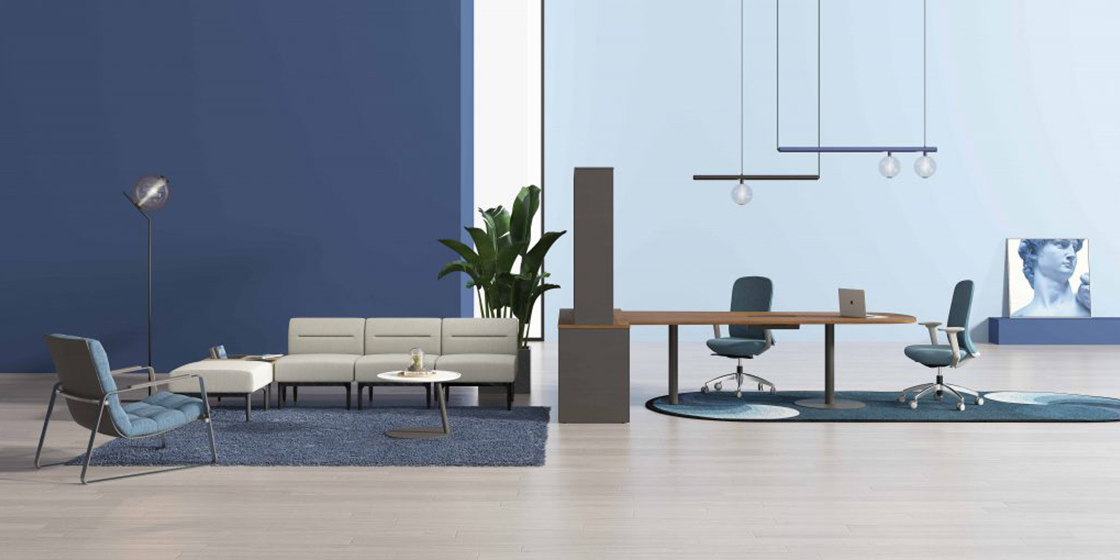
Chair: Aveza, Sofa: U series, Flower 6, Table: Mall
In the post-COVID-19 era, keeping employees safe from health risks is the top priority when it comes to office design. We had published an article last week about the best practices for safety, to help businesses be prepared. Whereas, in this article, we will discuss 10 design trends which will affect and influence our offices in 2020 and in the coming years:
1. Remote work and the office will coexist
Remote working undoubtedly became essential to business continuity during the COVID-19 crisis. But it doesn't mean we are ready to completely say goodbye to the office. The winning solution seems to be having teleworking flexibility, as well as the opportunity to work face-to-face with colleagues. This helps with work-life balance and overall employee happiness. The office is here to stay; working in an office strengthens humanity and innovation, purpose, energy, wellbeing, talent, culture, and beyond. With reduced staff in the office, the floor plan will have higher per-person square footage and the office will feel more spacious and relaxing.
Check out our blog on Remote working lessons.
2. Colors and Biophilia
The pandemic has understandably spurred a feeling of unrest, grief, and anxiety among consumers, who are now craving colors that instill a sense of reassurance and comfort. We can expect to see more biophilic design—gravitation toward hues that mimic the sensation of being in nature. These colors promote internal peace in an age where mental and physical well-being is critical.
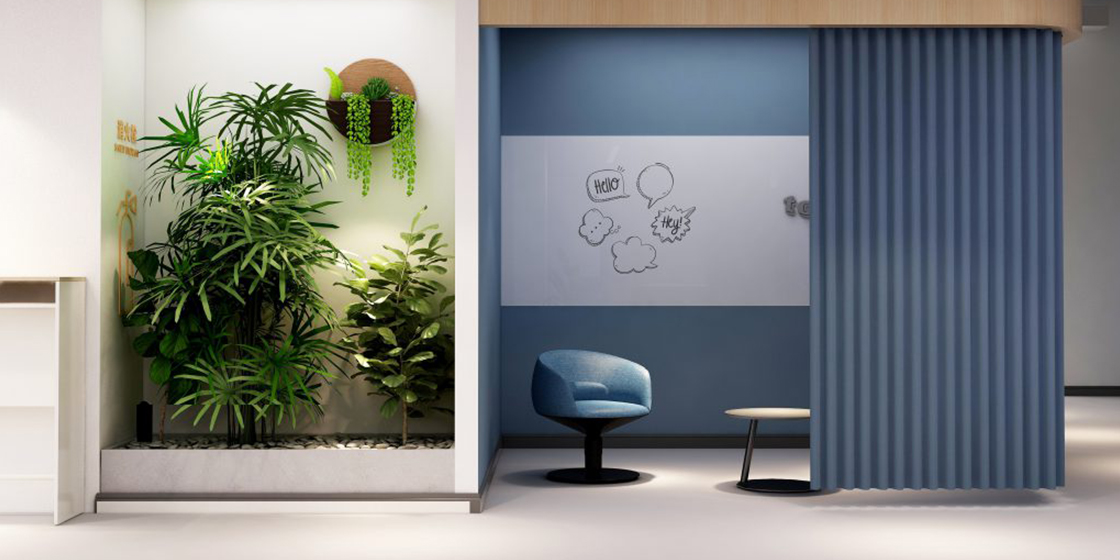
Sofa: U series
3. Smaller decentralized offices
Companies will maintain smaller offices as central “hubs”. Employees will visit office hubs for face-to-face meetings and to carry out work that cannot be done remotely. That could be in a co-working place, for example, for people who cannot work from home because not every home is suitable for working.
4. Data-driven Optimization of existing space
If a business decides to revamp their space, the right technologies and tools will be used for space optimization and asset management, considering the new rules of social distancing. The questions to start with are:
What's the total available space utilization from this design?
How many total workspaces support how many total workers?
What is the breakdown of space type and occupancy?
What is the cost per workspace vs. the cost of your lease?
With that information in hand, one can determine how to optimize the space or add more.
5. Open office is here to stay
The trend of open office spaces is not going anywhere. Open floor plans are much easier to clean and limit the amount of surface areas employees will touch as compared to cubicles. Many will need to adjust to accommodate personal space while still encouraging collaboration and giving employees a sense of transparency. Also, with more open will increase the need for better acoustically performing spaces, so more attention to acoustic materials and design will be key. Of course, for open offices, safety measures and new spatial planning are required.
Check out our detailed evaluation of Open offices in the Post-COVID workplace.
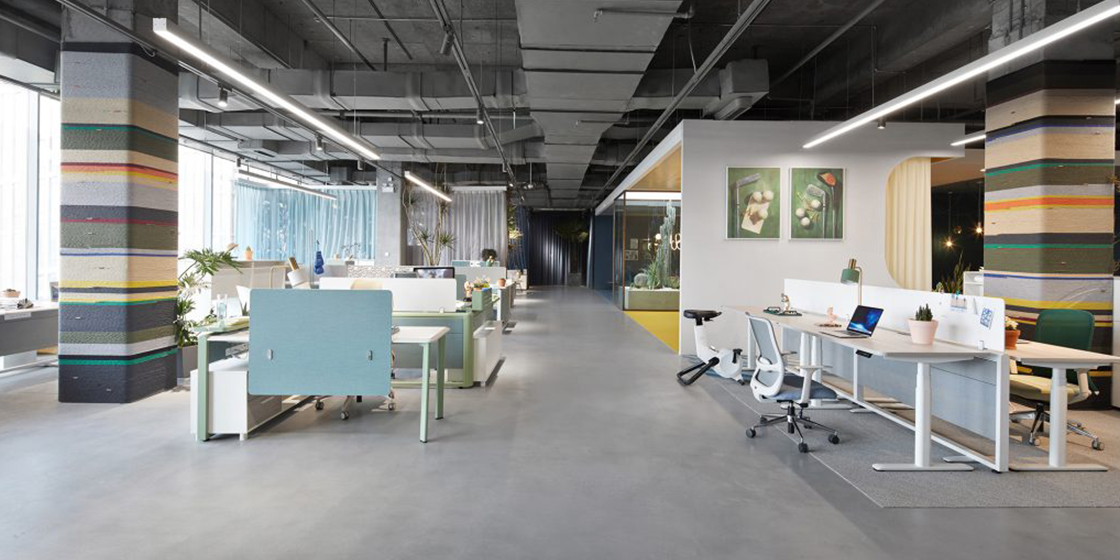
UP1 Height Adjustable Table in an Open Office
6. Smaller meeting rooms
Since some employees will still be working from the office, businesses will need to ensure employees can connect frequently and more seamlessly with the ones working remotely. One can have two or three people working in a smaller meeting room (while still keeping a social distance) communicating with those who are working from home. An Investment in video conferencing tools is the need of the hour.
7. Prioritization on Health and wellness
Social distancing has taken its toll on many of us, mentally and physically. In the coming future, most commercial offices will place increased importance on employee health and wellbeing. This may be seen by providing more breakout zones or outside space where staff can go to gain peace of mind, quiet, and relaxation. Offices may want to design areas with comfortable couches, lounge chairs so staff can kick back between times of high stress. Workspaces may include more sit-stand desks instead of traditional tables for movement and cubicles instead of benching for safety.
Check out our blog on the Rise of Cubicles.
8. The new and safe workstation
The challenge that many offices will face is ensuring a six-foot distance between workstations. Will our desks increase in size to create proper social distance boundaries, or will we provide more free space between them? Ultimately this will be up to each business. Additionally, businesses may add “workstation enclosures” like transparent plastic or glass screening panels that can protect employees but still allow them to see one another and interact.
Instead of Linear benching, we could use 120 degree and L type workstations which allow for working closely without the need for temporary plastic shields (something that could negatively affect collaboration and working openly together).
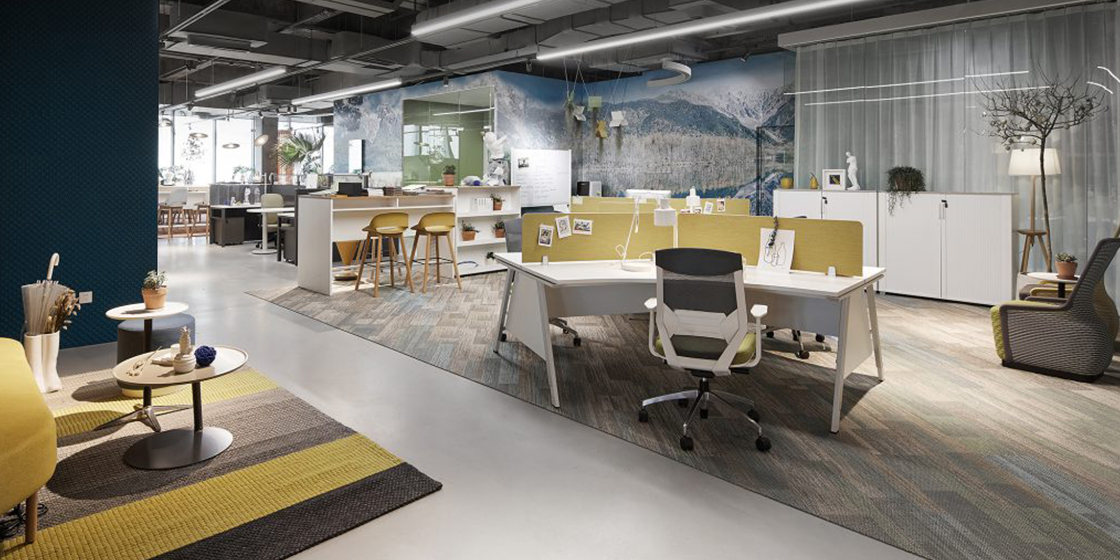
Desk: Lipa 120 degree, Chair: Vogue
9. A Flexible workplace
As there are likely to be fewer people in the office at the same time, maintaining a desk for each person may become less practical. As a result, hot-desking, combined with rigorous hygiene processes, becomes an option, especially as it frees up more space in the office to enable desk spacing to be increased. Organizations will recognize the need for agility and the flexible workplace now seems more apt than ever.
Note: In the early weeks/months after lockdown, desk sharing should be discouraged and so these solutions are slightly longer term.
10. More focus on furniture, finishes, and technology
To future-proof our environments, we need to use adaptable furniture, select finish materials that are easy to sanitize and antimicrobial, and technology that limit touching and make our office spaces more efficient.
Furniture: Lightweight and flexible furniture that is easily movable, reconfigured, and sanitized will help ensure that you are keeping your employees safe and providing you with the flexibility to change your floor plans when needed.
Finishes: Some finishes are much easier and cheaper to clean than other surfaces. Antimicrobial surfaces are a class of materials with the inherent ability to remove any bacteria from their surfaces in a variety of ways.
Technology: Touch-less technology and upgraded building mechanical system will provide optimal control e.g.
Motion lights and motion sensors when entering a room or turning on a faucet
Doors that open automatically with motion sensors or facial recognition
Elevators and AV systems that can be controlled from a smartphone or a digital tool.
To check out our furniture solutions with antimicrobial material, click here.
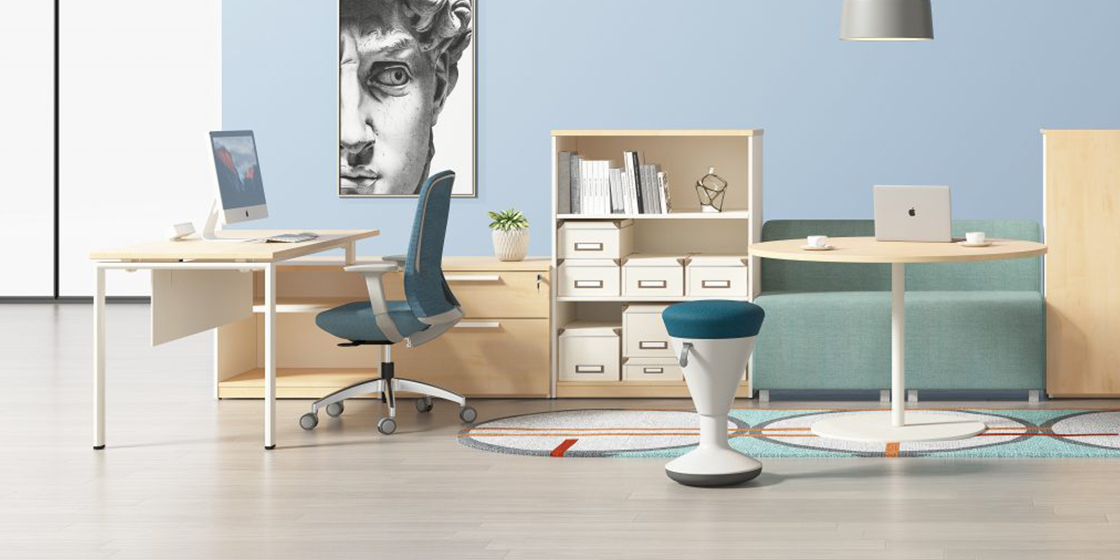
Desk: Mall, Chair:Aveza, Stool: Chessy
Conclusion
The future of the office is safer and technology-filled. As we continue to combat a global pandemic and its aftermath, we can look toward a brighter future filled with disruptive office design innovations that help employees better meet health and work-life balance requirements. The way we work and design workspaces will never be the same again. Our future workplace designs must cater to the post-COVID-19 world, and keep on adapting to the rules of the New Normal.